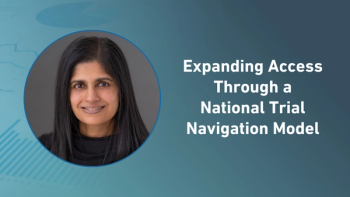
- Applied Clinical Trials-10-01-2024
- Volume 33
- Issue 10
Optimism’s Hidden Costs: How the ‘Planning Fallacy’ Undermines Trial Success
Overcoming this bias—which affects everything from trial design to data collection—is a critical obligation of clinical research stakeholders.
In clinical research, the stakes are high, and time is often of the essence. Yet, despite the clear importance of evidence-based and informed planning, we repeatedly fall victim to a very common challenge in change management: the Planning Fallacy. This cognitive bias,
This isn’t just a minor annoyance. The Planning Fallacy is a foundational issue in clinical trials, affecting everything from trial design to data collection, and, ultimately, the success of entire studies. Overcoming this bias is a critical obligation of clinical research stakeholders.
The pitfalls of the Planning Fallacy
Clinical trials are inherently complex, involving multiple stakeholders, evolving protocols, heterogeneous patient populations, and highly regulated environments. Yet, despite these known complexities, clinical research teams often create plans based on best-case scenarios. We are inclined to assume everything will go as smoothly as our initial planning suggests, ignoring potential roadblocks such as slow patient recruitment, regulatory hurdles, and unexpected data inconsistencies.
The fallacy is rooted in over-optimism. It leads to chronically unrealistic timelines, insufficient allocation of resources, and inadequate contingency plans (see illustration below). Worse still, when trials inevitably run into trouble, the focus shifts to reactive crisis management rather than reflective, data-driven problem-solving.
If we hope to accelerate clinical trial timelines and improve overall success rates, we need to do more than account for logistical challenges. We must directly confront the biases and heuristics driving these faulty assumptions.
The overlooked change management problem
Among the myriad of cognitive biases that perpetuate the Planning Fallacy, an often-ignored area is change management, particularly in relation to
What happens when I-Frame interventions are neglected? Project teams fail to adapt to the inevitable changes and challenges that arise during a clinical trial. Staff members may not be adequately ready to respond to setbacks, leading to further delays. Worse, the tools and processes put in place to aid in trial success may not be fully utilized because team members haven’t received effective training or support.
Planning for reality: Data-driven decision-making
One of the most effective ways to counter the Planning Fallacy is through better data-driven decision-making. By leveraging historical data and predictive analytics, clinical trial planners can anticipate challenges before they arise and adjust timelines, resources, and strategies accordingly. This approach allows for a more realistic, grounded perspective that mitigates common pitfalls and variability in clinical trial execution.
For example, predictive data might reveal that patient recruitment and screening in sites A, B, and C is likely to take 30% longer than sites J, K, and L. Armed with this information, project teams can proactively build flexibility into their planning, ensure accurate root-cause analysis, and effectively allocate resources to the most problematic stages of the trial process.
But this approach is only as effective as the people behind it. Without I-Frame interventions—without preparing teams to make informed, real-time adjustments—the planning fallacy will persist.
A call to action: Invest in better planning
Clinical research stakeholders must make it a priority to overcome the Planning Fallacy by smarter, more data-directed planning, design, and adaptive implementation. While large-scale S-Frame interventions, such as new technologies or streamlined protocols and manuals, are essential, they cannot replace the human elements—training, communication, and readiness-building—that define I-Frame interventions.
By focusing on both large and small-scale interventions, particularly those that prepare staff to make data-directed decisions, we can significantly improve trial timelines and success rates. Overcoming the Planning Fallacy requires a cultural shift: it demands that we prioritize realistic planning and empower our teams to adapt in real-time.
The future of clinical trials depends on this shift. We cannot continue to allow ungrounded optimism to guide our decisions, nor can we afford to neglect the essential I-Frame interventions that make these decisions actionable. It’s time to plan for reality and equip our teams to handle the complexities that come with it.
Brian S. McGowan, PhD, FACEHP, is Chief Learning Officer and Co-Founder at ArcheMedX, Inc.
Articles in this issue
about 1 year ago
New Trends and Tactics in Outsourcingabout 1 year ago
Achieving Optimal Adoption of Risk-Based Quality Managementabout 1 year ago
Implementing a Gold Standard FSP Strategic Partnershipabout 1 year ago
The Strategic Emergence of Site Networks in Clinical ResearchNewsletter
Stay current in clinical research with Applied Clinical Trials, providing expert insights, regulatory updates, and practical strategies for successful clinical trial design and execution.




